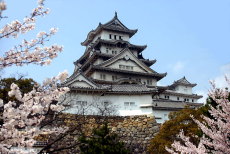UNESCO World Heritage in Japan

UNESCO World Heritage in Japan |
 |
Visit World Heritage in Japan |
TOP > World heritage
World Heritage in JapanWhat is World Heritage? The World Heritage program was founded with the 'Convention Concerning the Protection of World Cultural and Natural Heritage', which was adopted by the General Conference of UNESCO in 1972. They register the sites of outstanding universal value to the common heritage of humanity. There are 3 classifications by the properties. 1. Cultural heritage: Unique and creative buildings, ruins, cultural landscapes with outstanding value. For example, Acropolis in Athens 2. Natural heritage: Areas of outstanding value with unique and important geography, living things, landscapes, etc. For example, Yellowstone National Park in USA. 3. Mixed heritage: Heritages of outstanding value which has both aspects of culture and nature. For example, Machu Picchu in Peru. 192 countries participate and 1052 heritages are registered as of 2016. World Heritages in Japan Japan participated in 'Convention Concerning the Protection of the World Cultural and Natural Heritage' in 1992. Following is the list of World Heritages in Japan. 1. Buddhist Monuments in the Horyuji Area (Culture, registered in 1993) 2. Himeji-jo, Himeji Castle (Culture, 1993) 3. Yakushima, Yaku Island (Nature, 1993) 4. Shirakami-sanchi, Shirakami Mountain Range (Nature, 1993) 5. Historic Monuments of Ancient Kyoto (Culture, 1994) 6. Historic Villages of Shirakawa-go and Gokayama (Culture, 1995) 7. Hiroshima Peace Memorial (Genbaku-Dome) (Culture, 1996) 8. Itsukushima Shinto Shrine (Culture, 1996) 9. Historic Monuments of Ancient Nara (Culture, 1998) 10. Shrines and Temples in Nikko (Culture, 1999) 11. Gusuku Sites and Related Properties of the Kingdom of Ryukyu (Culture, 2000) 12. Sacred Sites and Pilgrimage Routes in the Kii Mountain Range (Culture, 2004) 13. Shiretoko (Nature, 2005) 14. Iwami Ginzan Silver Mine and its Cultural Landscape (Nature, 2007) 15. Ogasawara Islands (Nature, 2011) 16. Hiraizumi (Culture, 2011) 17. Mount Fuji, sacred place and source of artistic inspiration (Culture, 2013) 18. The Tomioka Silk Mill and Related Industrial Heritage (Culture, 2014) 19. Sites of Japan’s Meiji Industrial Revolution: Iron and Steel, Shipbuilding and Coal Mining (Culture, 2015) 20. The Architectural Work of Le Corbusier, an Outstanding Contribution to the Modern Movement (Culture, 2016) 21. Sacred Island of Okinoshima and Associated Sites in the Munakata Region (Culture, 2017) 22. Hidden Christian sites in Nagasaki and Amakusa Region (Culture, 2018) 23. Mozu-Furuichi Kofun Group: Mounded Tombs of Ancient Japan (Culture, 2019) 24. Jomon Prehistoric Sites in Northern Japan (Culture, 2021) 25. Amami-Oshima Island, Tokunoshima Island, northern part of Okinawa Island, and Iriomote Island (Nature, 2021) 26. Sado Island Gold Mines (Culture, 2024) |
 Himeji Castle -Horyuji Temple -Himeji Castle -Yaku Island -Shirakami Mountain Range -Ancient Kyoto -Shirakawa-go and Gokayama -Hiroshima Peace Memorial -Itsukushima Shrine -Ancient Nara -Shrines and Temples in Nikko -Kingdom of Ryukyu -Kii Mountain Range -Shiretoko -Iwami Silver Mine -Ogasawara Islands -Hiraizumi -Mount Fuji -Tomioka -Site of Industrial Revolution -Architectural Work of Le Corbusier -Okinoshima & Munakata |
| Copyright(C) Let's Travel in Japan! All Rights Reserved |